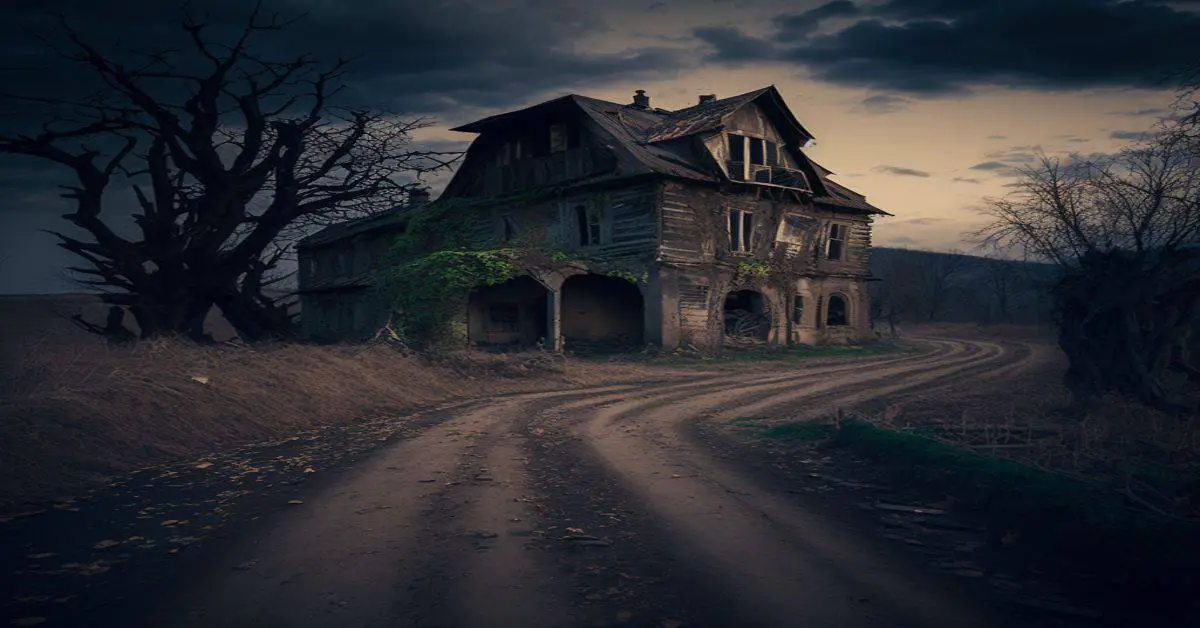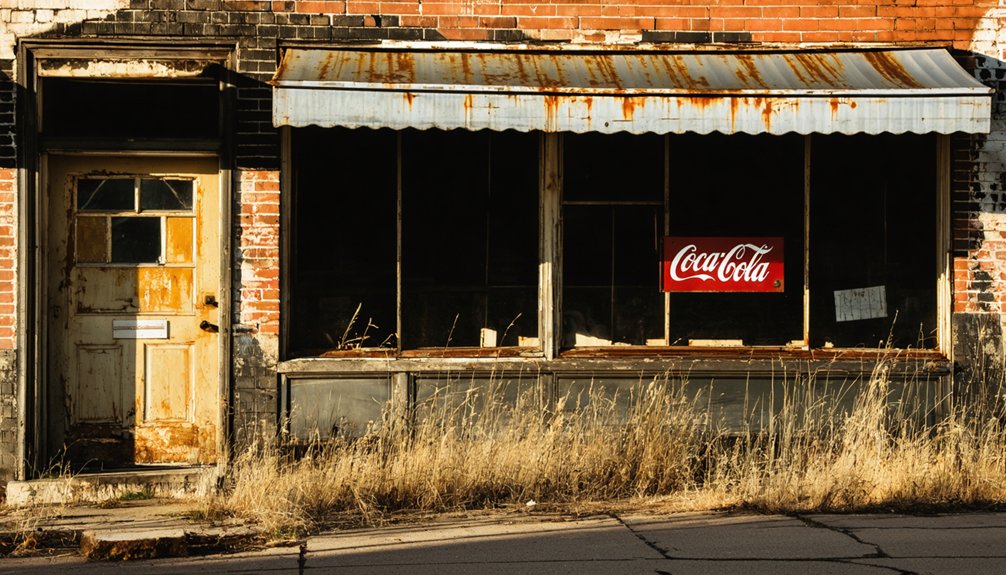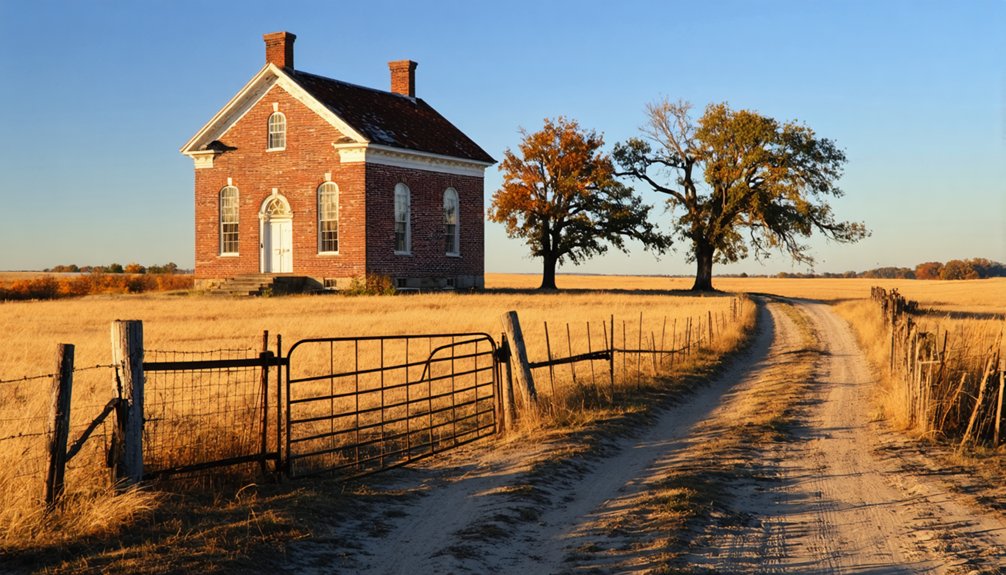You won’t find much evidence of Anderson as a formal settlement in Macoupin County, Illinois, though the name lives on through the historic Anderson Mansion. Built in 1883 by banker C.H.C Anderson, this Victorian estate showcases the family’s influence in the region. The Andersons, who arrived from Kentucky in 1834, established Anderson’s Point on 400 acres and shaped the area’s agricultural development. The mansion’s tower and cemetery hold untold stories of this pioneering family’s legacy.
Key Takeaways
- The existence of Anderson as a formal town remains unsubstantiated, with no concrete evidence of an established settlement.
- The Anderson name primarily connects to the prominent Anderson family and their mansion, rather than a verified ghost town.
- The Anderson Cemetery and Anderson’s Point (400 acres) mark historical family presence but don’t confirm an actual town existed.
- While early settlers developed the area, historical records show dispersed farming operations rather than a concentrated town settlement.
- The Anderson Mansion, built in 1883, stands as the primary historical landmark associated with the Anderson name in Macoupin County.
Historical Roots and Settlement Origins
While historical records document extensive settlement in Macoupin County during the early 19th century, the existence of a town called Anderson remains unsubstantiated. The county’s early settlement patterns centered primarily around scattered farmsteads rather than concentrated communities, with pioneers of English, Irish, German, and Scots-Irish descent drawn to the region’s abundant timber and fertile prairie soil.
You’ll find that agricultural development dominated the landscape, as early settlers established dispersed farming operations across the county. Local banker C.H.C Anderson commissioned the construction of what would become the Anderson Mansion in 1883, marking a significant architectural presence in the area. Historical accounts suggest the mansion had connections to local tunnel networks that ran beneath parts of Carlinville.
Despite thorough historical research through archives, census records, and local historical societies, no evidence supports the presence of a formal Anderson settlement. The Anderson Mansion in Carlinville represents the only verified historical connection to the name, though it was simply a private residence rather than a community center.
The Legacy of John C. Anderson
Throughout three generations, the Anderson family left an indelible mark on Macoupin County’s development, with John C. Anderson carrying forward his family’s pioneering spirit.
You’ll find his community contributions deeply rooted in both agriculture and education, following the path of his father William C., who farmed for over 40 years and served as a school director. John C.’s own pursuit of classical studies at Blackburn University exemplified the family’s commitment to educational initiatives. His thriving 181.5 acre farm became known throughout the region for its productivity.
The Anderson family championed education alongside farming, with John C.’s university studies reflecting their dedication to academic excellence.
The Anderson legacy lives on through the mansion that’s now a museum on the National Register of Historic Places. His marriage to Lucy W. Boddie in 1880 strengthened ties between prominent families in Illinois and Kentucky.
Their Irish and Scotch heritage enriched the county’s cultural fabric, while their business ventures, spearheaded by Crittenden H. C. Anderson, strengthened the area’s economic foundation.
Today, you can explore their impact through preserved historical records and the Anderson Mansion Museum.
Architecture of the Anderson Mansion
When you visit the Anderson Mansion today, you’ll see the original Victorian elegance preserved in its combined Italianate and Queen Anne architectural styles, featuring tall narrow windows and paired columns on the first floor.
The mansion’s most striking feature is its square tower, added during the 1892 expansion along with stick framework and gabled dormers that transformed the second floor. Located at 920 W. Breckenridge Street, this architectural gem stands as a testament to Carlinville’s historic heritage. Visitors can explore the historic blacksmith shop and print shop on the grounds.
Inside the thirteen-room structure, you’ll find the preserved interior layout that showcases the transformation between the 1883 construction and 1892 addition, including a beautifully crafted stained glass window framed with period woodwork on the upper floor.
Original Victorian Design Features
The Anderson Mansion showcases a remarkable blend of Victorian architectural styles, with its 1883 first floor exhibiting Italianate features and its 1892 second floor addition displaying Queen Anne elements.
You’ll notice the Victorian craftsmanship in its tall, narrow windows, paired brackets, and dentillated cornices along the eaves. The asymmetrical porch features paired columns that support the entry. Similar to the county’s Million Dollar Courthouse, the mansion exemplifies the grandeur of Renaissance Revival influences popular in the 1870s-1890s.
The home’s architectural ornamentation includes intricate Stick style framework, visible in the decorative wood trim that expresses structural elements as design features. Today, the mansion serves as the county museum, preserving local history through its exhibits and architecture.
The second floor’s multi-component roof sports gabled dormers, while a stunning stained glass window adds period authenticity.
The mansion’s 13 rooms spread across three stories incorporate refined woodwork, from ornate window frames to detailed moldings, exemplifying the rich detailing of late 19th-century design.
Tower and Expansion Details
Standing prominently above the Anderson Mansion’s Queen Anne features, a square tower added during the 1892 expansion marks a significant architectural achievement.
You’ll notice how the tower’s Stick Style framework seamlessly integrates with the building’s overall design, creating a harmonious blend of architectural aesthetics.
The tower’s functionality extends beyond its striking appearance:
- Serves as a potential observatory or lookout point, offering expansive views
- Contributes to the structural stability of the mansion’s second-floor expansion
- Reflects the Anderson family’s growing prosperity during the late 19th century
- Demonstrates innovative architectural integration techniques of the period
When you explore the mansion today, you’ll see how this tower addition exemplifies the masterful combination of form and function that defines this historic structure. Visitors to the new website address can now explore detailed virtual tours of the tower’s architecture.
Interior Layout Preservation
Today’s visitors to the Anderson Mansion will discover a remarkably preserved 13-room interior that spans three stories, including a full basement and attic.
The interior layout reflects authentic Victorian-era design, with formal parlors and dining areas flowing into carefully maintained service rooms. You’ll find the first floor showcases Italianate styling, while the second floor features Queen Anne elements, including ornate stained glass windows with decorative wood frames.
The preservation techniques employed throughout maintain the mansion’s historic integrity. Original woodwork, trim, and staircases display late 1800s craftsmanship, while period-appropriate paint colors and wallpaper patterns remain true to the era.
The museum’s adaptation balances accessibility with conservation, incorporating modern safety features while protecting the authentic Victorian room configurations and historic materials.
Notable Family Members and Early Pioneers
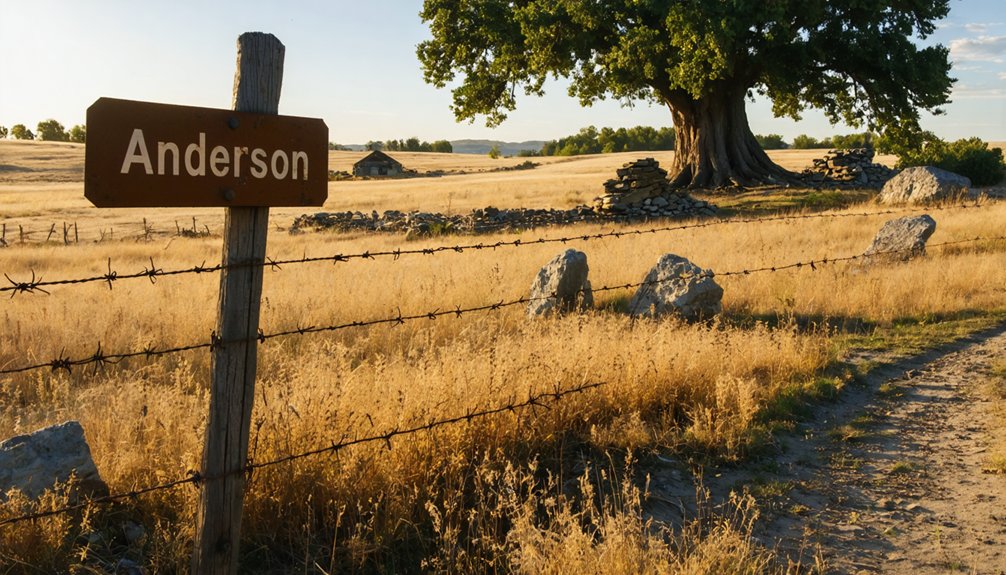
You’ll discover evidence of Anderson’s pioneering spirit through its most prominent early settlers, though specific family names have been lost to time except through fragmentary records.
The town’s cemetery, while its exact location remains uncertain, served as the final resting place for many of these agricultural innovators and community builders who shaped Anderson’s early development.
Local historical records suggest that these founding families established farms, created the first business ventures, and built the social foundations that would sustain the community through its peak years.
Located just outside Astoria, Anderson attracted numerous families seeking new opportunities in Central Illinois during its early days of settlement.
Anderson Family Early Leaders
Three influential early leaders of Anderson, Illinois emerged from the Anderson family lineage, starting with James C. Anderson, who arrived from Kentucky in 1834 and established Anderson’s Point on 400 acres of government land.
The Anderson legacy continued through Crittenden Henry Crawford Anderson, who promoted community welfare and managed the family’s extensive farming operations after his father’s death.
- James C. Anderson secured the family’s foothold by establishing Anderson’s Point and designating land for the Anderson Cemetery.
- C.H.C. Anderson expanded the family’s influence through land dealings and cattle trading across multiple states.
- William C. Anderson Sr. served as the county’s first blacksmith while developing farming operations.
- John Crittenden Anderson represented the third generation of pioneer contributions, maintaining the family’s agricultural roots and community leadership.
Cemetery Reveals Pioneer History
The Anderson Cemetery stands as a tribute to the area’s pioneer heritage, with its weathered headstones revealing stories of the region’s earliest settlers.
You’ll find Col. James Campbell Anderson and his wife Ann R. Anderson among the most prominent pioneers buried here, their deaths in 1851 marking the end of the frontier era.
The cemetery’s burial practices reflect the harsh realities of pioneer life, with pioneer demographics showing many residents dying in middle age.
William Anderson’s presence, who farmed in Cahokia Township until 1918, connects the site to the region’s agricultural legacy.
The old stones and detailed inscriptions serve as valuable records of early settlement patterns, helping you trace the development of Macoupin County from wilderness to established farming community.
Property Development and Land Expansion
During the early 19th century, Anderson settlement emerged as a notable property development in Macoupin County, where pioneer families – particularly the Anderson lineage – shaped the region’s initial land holdings near Carlinville township.
Land use patterns evolved rapidly as the area transformed from rural farmland to a bustling commercial center.
Key developments in property ownership included:
- The Anderson & Glass partnership’s pioneering drug store on Carlinville’s public square
- Construction of three-story brick buildings in the mid-1850s, including the landmark Duplex Building
- Integration of residential-commercial spaces with owners living above their businesses
- Underground modifications due to coal mining activities at 320-foot depths
These property developments reflected the area’s economic growth, though the presence of coal mines considerably influenced land use decisions and structural planning throughout the region.
From Private Estate to Public Museum
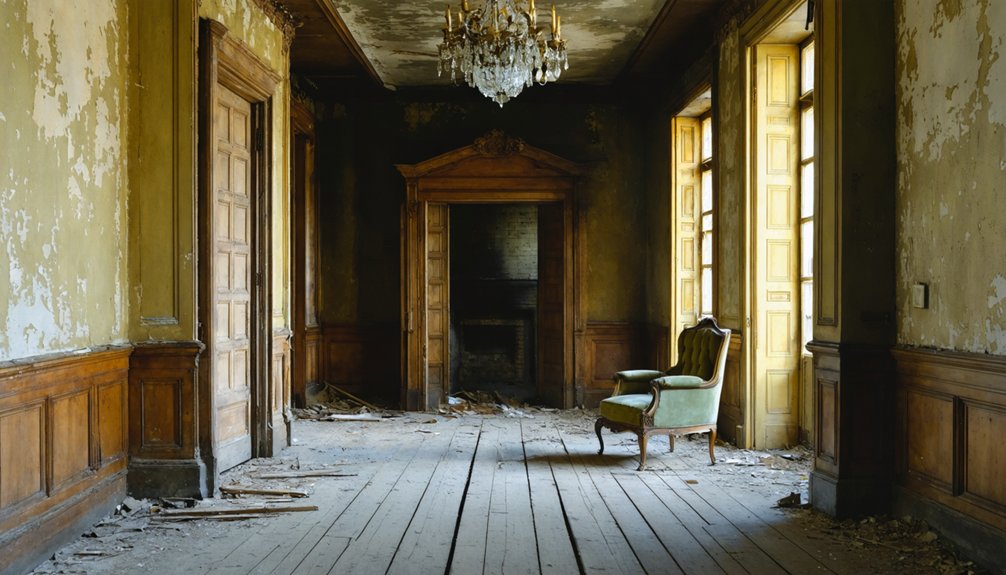
Over several decades, Anderson’s private family estate transformed into a vibrant public museum showcasing Macoupin County’s rich cultural heritage.
The historic Anderson estate evolved from a family home into a cultural cornerstone celebrating Macoupin County’s diverse heritage.
You’ll find carefully curated exhibits reflecting the region’s evolution, with historical collections and artifacts that preserve the area’s cultural significance.
The museum’s success stems from strong community involvement, with local volunteers managing guided tours and educational programs.
You’ll see ongoing restoration projects maintaining the estate’s historical integrity while making it accessible to visitors and researchers.
The site’s social media presence and partnerships with local historical societies have expanded its reach, creating a dynamic cultural hub.
Through state and local grants, the museum continues to grow, offering you opportunities to explore Anderson’s ghost town history through innovative exhibits and community events.
The Role of the Historical Society
Since its formation in 1970, Macoupin County Historical Society has served as the cornerstone of Anderson’s heritage preservation efforts.
You’ll find their dedication to historical preservation most evident in their stewardship of the Anderson Mansion Museum, which they acquired in 1973 and successfully listed on the National Register of Historic Places in 1992.
The Society’s commitment to community engagement is demonstrated through:
- Monthly rotating meetings across county communities to share local history
- Educational programs featuring authentic period buildings, including a schoolhouse and blacksmith shop
- Annual festivals in May and September showcasing mansion tours and antique equipment
- Special events like paranormal investigations that attract diverse audiences
You can visit the museum on Wednesdays or schedule Sunday tours by appointment, experiencing firsthand their ongoing mission to preserve and share Macoupin County’s rich heritage.
Cemetery and Cultural Heritage

Mystery shrouds the cemetery’s existence in Anderson ghost town, as no official records document its precise location or name within Macoupin County.
While genealogical research mentions family burial grounds like Shaws Point and Carlinville Township cemeteries, you’ll find no definitive link to Anderson’s specific site.
The cemetery significance extends beyond mere burial grounds – these sites served as cultural touchstones for 19th-century settlers, reflecting community values and religious traditions.
Cultural remembrance took shape through Memorial Day gatherings and family reunions at these sacred spaces.
Though the Anderson family’s legacy in Macoupin County is well-documented through biographical sketches, their burial locations remain unclear.
Like many ghost town cemeteries in rural Illinois, if Anderson’s exists, it’s likely reclaimed by nature, its stories waiting to be uncovered by determined researchers.
Present-Day Museum Operations
Today the historic Anderson Mansion stands as the centerpiece of a thriving museum complex at 920 W. Breckenridge Street in Carlinville.
You’ll find this National Register-listed property open every Wednesday, with special tours available by appointment. The museum exhibits span multiple authentic structures across the grounds, offering deep engagement with local history.
- Tour the mansion’s period furniture and household collections for a $5 adult admission
- Explore working demonstrations at the blacksmith shop and sawmill during festivals
- Research family histories in the genealogy library housed in the 2011 Ruyle Building
- Visit during major festivals in May and September to experience live demonstrations, crafts, and home-cooked foods
The museum complex operates entirely through community support and festival proceeds, receiving no government funding.
Frequently Asked Questions
What Was the Original Purchase Price of the Anderson Mansion?
You won’t find the original purchase price of Anderson Mansion in public records. Despite the mansion’s rich history, no surviving documents or archives reveal what C.H.C. Anderson paid for this historic property.
Were There Any Reported Paranormal Activities in the Anderson Mansion?
You won’t find documented ghost sightings or haunted history at Anderson Mansion in official records. While local folklore includes paranormal tales around Carlinville, none are specifically tied to this historical building.
How Many Visitors Does the Anderson Museum Receive Annually?
While exact museum attendance figures aren’t publicly available, you’ll find the Anderson Museum draws visitors primarily during Wednesday openings, Sunday appointments, and the popular spring and fall festivals throughout the year.
What Happened to the Original Anderson Family Furniture and Belongings?
You won’t find records detailing what happened to the Anderson family’s original furniture and belongings, as local historical documents don’t track these items’ fate or any specific restoration efforts.
Did Any Famous Historical Figures Ever Visit the Anderson Mansion?
Despite the mansion’s 130-year history, you won’t find records of any famous visitors. Historical archives and documentation show the home’s historical significance centered on local family life rather than celebrity guests.
References
- https://mchssociety.org
- https://macoupin.illinoisgenweb.org/biographies/a/andersonjohn1911bio.html
- https://ilmacoupin.whalen-family.org/cemetery/wpa-anderson.html
- https://macoupin.illinoisgenweb.org/biographies/a/andersoncrittenden1911bio.html
- https://collections.carli.illinois.edu/digital/collection/sie_brink/id/1640/
- https://sites.rootsweb.com/~ilmaga/macoupin/1891bios/anderson_chc.html
- https://www.enjoyillinois.com/explore/listing/macoupin-county-historical-society-museum/
- https://www.carlinvillelibrary.org/historical-site/anderson-mansion-home-of-the-macoupin-county-historical-society/
- https://macoupin.illinoisgenweb.org/history/tunnels-carlinville.html
- https://collections.carli.illinois.edu/digital/collection/sie_brink/id/1589/

